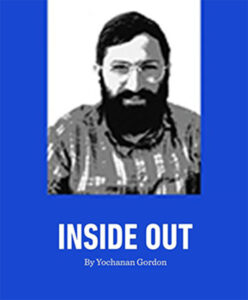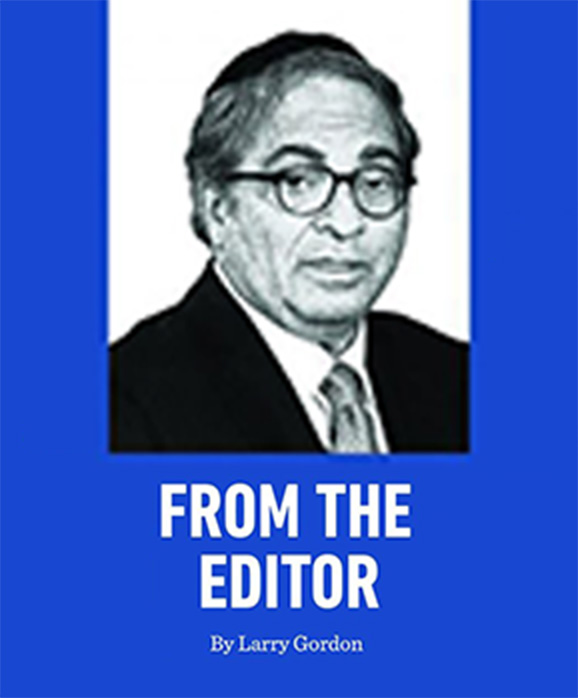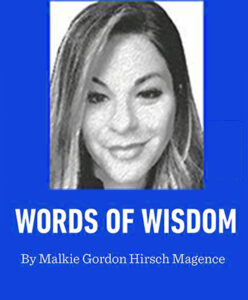Gimmel Tammuz Reflections
By Yochanan Gordon
This is the thirty-first time we mark Gimmel Tammuz, the date in 1994 when it felt as if the world had gone dark.
It’s somewhat ironic because another major event took place on this very day thousands of years ago. It is the day when Hashem held the sun in place as Yehoshua Bin Nun and the Jewish people completed their mission against the Givonim. The day that became known for extended sunlight is, paradoxically, the day that also brought so much confusion and ambivalence.
Throughout the calendar, some days are designated for reflection, while others call for action. The Arizal, based on the verse, “And these days are commemorated and acted upon throughout generations,” explains that holidays are not merely commemorations of past events. Rather, the historical event that took place years ago is reoccurring in real time every year thereafter on the same day.
Despite the many times I’ve sat here at this computer, fingers hovering over the keyboard, trying to capture the life of the Rebbe, I’ve always aimed on reflecting what was, to highlight aspects of his life and leadership that were unique and inspiring. But Gimmel Tammuz is not just a yahrzeit. It marked the beginning of a new era—not a leaderless era, but one in which the Chassidim themselves rose to the throne of leadership.
This has been said before: the fact that the Rebbe was both a Chassid of the Frierdiker Rebbe and the Rebbe of Chassidim at the same time was the perfect harbinger of what would unfold with the Rebbe’s passing on Gimmel Tammuz.
People who are unfamiliar with the inner workings of Chabad often ask how it’s possible that 31 years after the Rebbe’s passing there is no successor. The answer is: there is. The Rebbe did appoint a successor. And if you want to know who, just look in the mirror.
In the past, I would explain the concept of a Neshama Klolis, a soul rooted in the realm of Atzilus, and argue that we can’t simply appoint someone for the sake of having a leader. But while that sounded good at the time, it wasn’t entirely true. The truth is, the Rebbe appointed each of us: you, me, every Jew. That is both empowering and daunting because, while once only someone uniquely endowed from birth could be seen as a Rebbe, now that we are all called upon to be Rebbes, we must view each other with the reverence we would have reserved for a Rebbe.
The Gemara teaches that Moshiach will come to a generation that is either entirely meritorious or entirely blameworthy. But perhaps this is not describing two different generations. Perhaps it describes one generation seen through different eyes. Our generation can be seen as both meritorious and condemnable at the same time, depending on how you choose to see it.
In fact, if we’re talking about Chassidus and what it takes to be a Chassid (let alone a leader ofChassidim), it’s worth exploring how Chassidus is defined. In Sanhedrin 110b, when Rebbe Akiva is noted for interpreting a verse about the generation of the desert less favorably, Rabbah bar bar Chana exclaims, “Amar Rabbi Yochanan shavka Rabbi Akiva l’chassiduteya”—Rabbi Akiva’s piety had left him. Meaning, all of Chassidus can be distilled to this: seeing light where others see darkness.
Many of these ideas were inspired by drashos of Rabbi Yussie Zakutinsky, the Rav of Kahal Mevakshei Hashem in Lawrence where I daven. He has passionately emphasized that the main avodah of our generation is to see the good in everyone and in every situation, and to be creative in finding merit.
In a recent conversation, he shared a beautiful thought: Perhaps this is what it means to shine Moshiach’sbuttons. The Frierdiker Rebbe famously said that everything needed to bring Moshiach has been done, all that’s left is to polish his buttons. I’ve long wondered what that meant—and what takes so long? Rabbi Zakutinsky suggested that polishing buttons means seeing those who might not normally be regarded with such importance as the most righteous and meritorious souls on earth. And if you think about it, buttons obstruct progress. So even those Jews who seem to hold us back must be seen through a meritorious lens.
And it’s not enough to reserve this perspective for the mekuravim or prospective mekuravim. To be a Rebbe means to be consistent, to always view Yidden and situations through the most positive eyes. The Arizal teaches in Eitz Chaim that the primordial shattering of vessels came from outward vision rather than inward vision. The lesson of Gimmel Tammuz this year and every year is to look from the inside toward the inside, i.e., to train ourselves to see others, even those who challenge us most, with eyes of redemption. To see Gimmel Tammuz not as the sun setting at midday, but as the sun standing still. To see a generation that others might condemn as the most righteous generation of all. And that, at its essence, is what it means to be a Rebbe. n
The author can be reached at [email protected].









